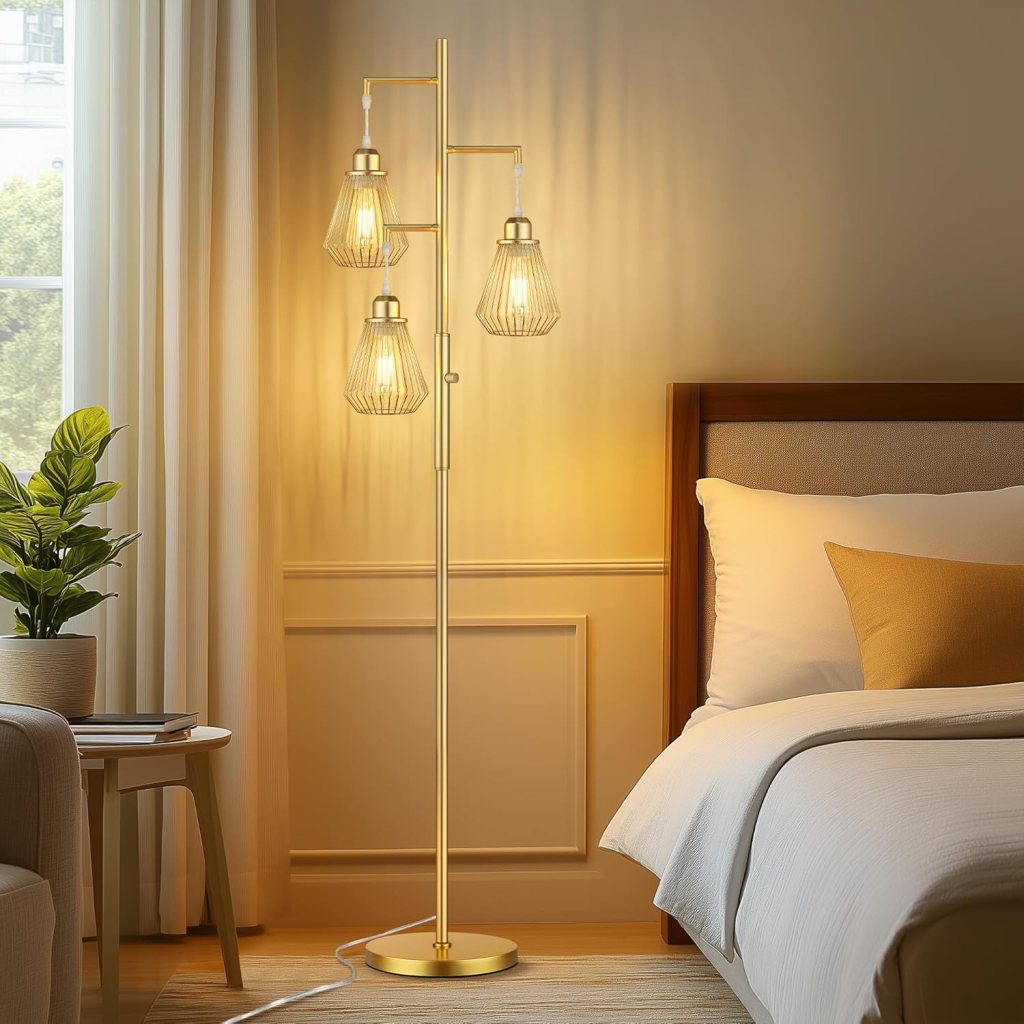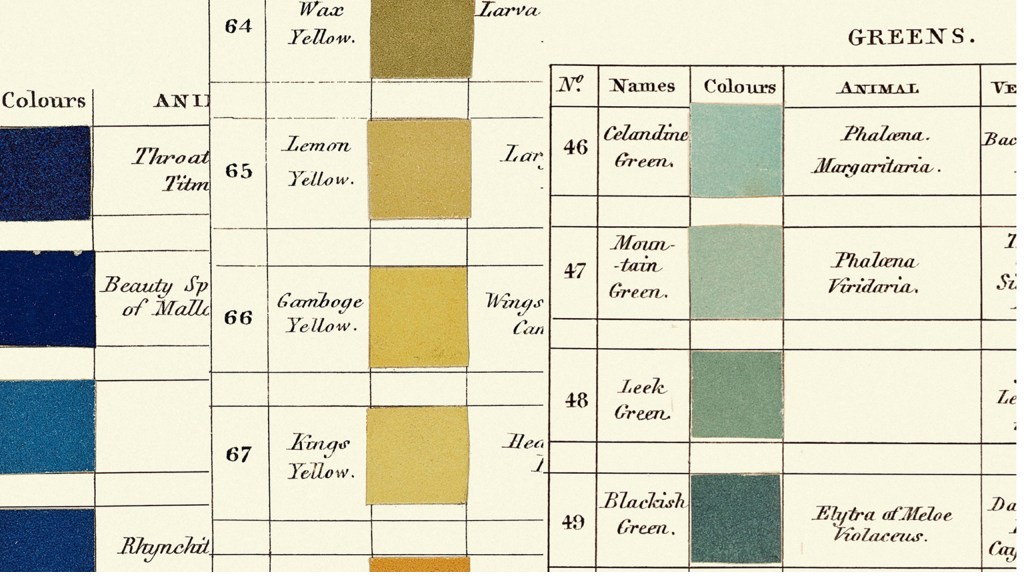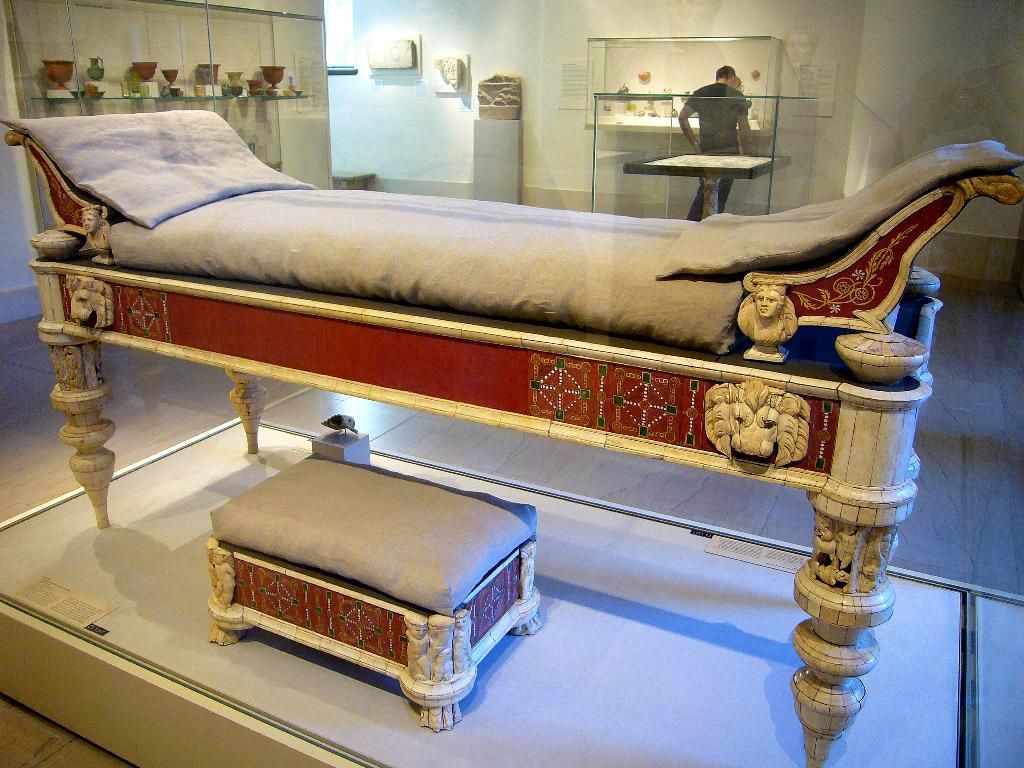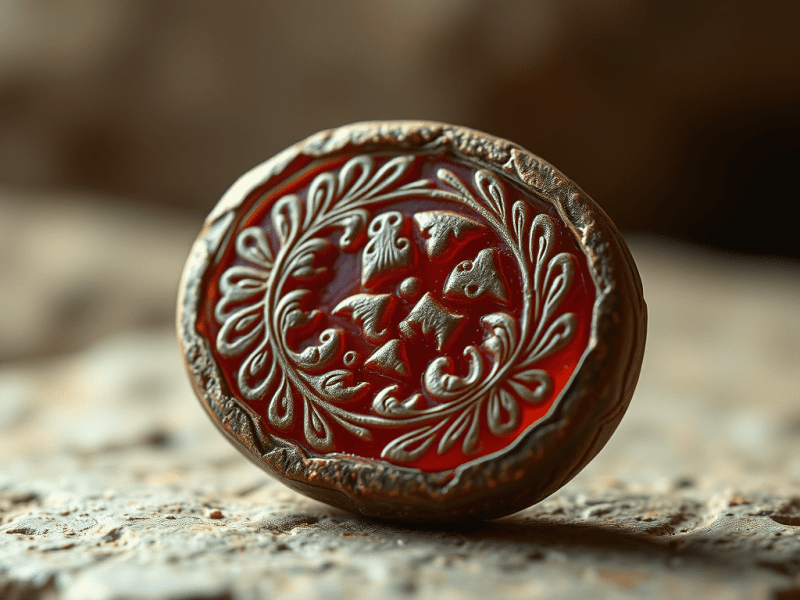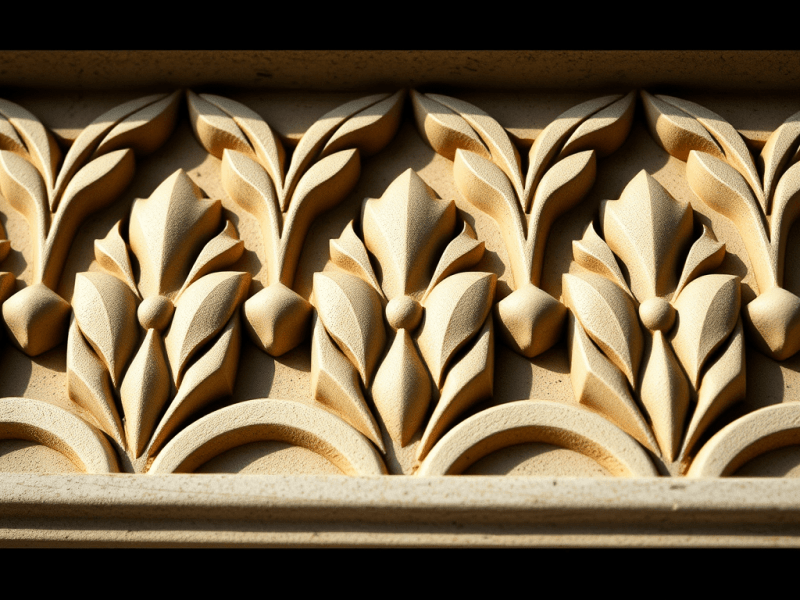Fall Front Desk – Section of the front face of cabinet, desk or drawer that is hinged at the bottom and can open by falling forward. It is supported in a horizontal, open position by chains or by sliding arms emerging from the body of the piece, LOPERS, to provide a writing surface. Closed, it may rest in a vertical position, as in the Writing Cabinet Or SECRÉTAIRE À ABATTANT, or it may slope upward and toward the back of a piece, as in a SLANT-TOP DESK. The fall front was a development of late MEDIEVAL and RENAISSANCE FURNITURE and has been used ever since.
Upright Position
The desktop panel of is exactly upright when closed, unlike the secretary’s desk. Over the area that the desktop encloses, there are frequently no additional shelves or drawers. The fall-front desk thus resembles a Bargueo desk, which would have been set atop a stand of drawers, or more specifically, the design known as the “chest-on-chest” desk.
The desk may also be called a drop-front desk or a drop-lid desk. Ancient variants include scrutoire and scriptoire. Similar in appearance, the “secrétaire à abattant” is typically in a French style, such as Louis XV, Art Deco, etc. Shaker communities created a tall, simple form of the “cupboard desk” in the early 19th century.

Sources
Boyce, C. (1985). The Wordsworth Dictionary of Furniture. Wordsworth Reference.
More Dictionary Terms
The Allure of Agate: History and Modern Uses
The agate cup in the V&A Museum illustrates the stone’s historical significance in art. Valued for beauty and versatility, agate…
Exploring Italian Gothic Design: Art and Architecture
Italian Gothic architecture, flourishing from the 12th to 16th centuries, blends Northern influences with classical heritage, showcasing elaborate façades, functional…
Exploring Lampblack in Decorative Arts
Lampblack powder, derived from soot, is a versatile black pigment widely used in inks, paints, calligraphy, and various decorative arts…
The Tarot: A Pictorial Journey in the Applied and Decorative Arts
The Tarot, a historical artistic and divinatory tool, blends pictorial design, symbolism, and craftsmanship, evolving through centuries while inspiring contemporary…
56 Ecclesiastical Art and Vestments Terms and Definitions
The content outlines various ecclesiastical vestments, sacred vessels, and art used in Christian traditions, detailing their functions and significance in…
The Fitzhugh Pattern: A Classic Oriental Lowestoft Design
The Fitzhugh Pattern, a Chinese export porcelain design from 1815, features an American eagle and symbolizes U.S. trade, reflecting fascinating…
Electroplate and Electroplating: A Revolutionary Manufacturing Process
The evolution of electroplating by Elkington & Co. transformed affordable luxury in 19th-century home goods, enhancing craftsmanship and accessibility while…
Teardrop Cage: A Statement in Decorative Arts and Lighting
The Elegant Teardrop Industrial Style Lamp blends classic industrial design with modern utility, featuring a unique teardrop cage that enhances…
Exploring Janus: Symbolism in Architecture and Design
Janus, the Roman god of gates, doorways, transitions, and time, embodies the dual nature of beginnings and endings. His distinctive…
Gapestick a Historical Curiosity in Culinary Utensils
The gapestick, a large wooden cooking spoon from medieval kitchens, embodies humor and historical significance, illustrating its dual role in…
The Decorative Folding Screen: A Fusion of Art and Function in Interior Design
Folding screens, originating from ancient China, blend aesthetics and functionality in interior design, evolving into versatile room dividers and artistic…
The Vibrant World of Gaudy Pottery: Dutch, Ironstone, and Welsh
The decorative arts showcase the Gaudy ceramics of the 19th century, highlighting three distinct styles—Gaudy Dutch, Gaudy Ironstone, and Gaudy…
Flow Blue Ceramics: A Guide to This Iconic Tableware
Flow Blue ceramics are renowned for vibrant cobalt designs with blurred patterns. Produced mainly in 19th-century England, they are prized…
Key Features of Scandinavian Modernism
Scandinavian Modernism, emerging post-World War II, emphasizes functionality, natural materials, neutral colors, and light, promoting well-being and timeless design principles…
Exploring the Art of Majolica: A Glimpse into Vibrant Ceramic Tradition
Majolica is a vibrant pottery form that evolved from Moorish Spain to 19th-century England, cherished for its colorful designs, utility,…
The Art of Émail Ombrant: A 19th-Century Decorative Revolution
Émail ombrant, a 19th-century pottery technique, uses colored glaze to create depth and sophistication, reflecting artistic innovation and natural motifs,…
The Evolution of the Picture Frame: From Ornament to Minimalism
The picture frame has evolved from ornate, integrated designs to minimalist styles, reflecting artistic trends and technological advancements, adapting to…
The Alabastron: A Dual-purpose Vessel of Ancient Greece
The alabastron is a small, elegantly designed ancient Greek vessel for holding ointments and perfumes, reflecting both practicality and artistic…
Neoplasticism: The Geometry of Purity in Art and Design
Neoplasticism, founded by Piet Mondrian and Theo van Doesburg in 1917, sought universal visual language through geometric abstraction, primary colors,…
Chiaroscuro: The Art of Light and Shadow in Design
Chiaroscuro, originating during the Renaissance, emphasizes light and shadow to enhance depth across various artistic fields, influencing aesthetics, mood, and…
The Artistic Legacy of Snuff Boxes: 18th and 19th Century Treasures
Snuff boxes, once status symbols crafted from luxurious materials, evolved into decorative art pieces, reflecting cultural values and personal identity,…
Nieuwe Kunst: The Dutch Art Nouveau Movement
Nieuwe Kunst, a Dutch Art Nouveau movement, emphasized geometric patterns, functionality, and the merging of fine arts with practicality, influencing…
Brocade Weaving: History and Techniques Explained
Brocade is an intricate fabric with a rich history, originating in ancient China and evolving through cultures, known for luxury,…
Understanding Critical and Inclusive Design Approaches
The design world embraces innovative concepts like critical design, inclusive design, and resonant design, emphasizing thoughtful questioning, user participation, and…
The Impact of Werner’s Nomenclature on Design
Werner’s Nomenclature of Colours, published in 1814, standardized colour classification using nature, influencing 19th-century science and art, and paving the…
The History and Impact of Chintz Fabric in Decorative Arts
Chintz fabric, originating in 16th-century India, has profoundly impacted decorative arts and fashion, known for its vibrant patterns and resurgence…
Understanding Tambour Doors: A Historical Overview
The Amish Roll Top Desk features tambour doors, which are flexible wooden slats allowing seamless concealment of storage, optimizing space…
Roman Lectus: The Ancient Couch That Defined Luxury & Modern Design
The lectus was a multifunctional Roman furniture piece, evolving from the Greek klinē, featuring comforts like headrests, ornamentation, and resembling…
Understanding Stoneware: Composition and Characteristics
Stoneware is a durable, high-fired ceramic originating from ancient Mesopotamia, with significance in various cultures. Its versatility and glazing techniques…
British Influence on Indian Silver Craftsmanship
Indian silverware from the colonial period blended British and Indian design but lacked standardized hallmarking, making authenticity assessment challenging for…
Benefits of Vintage Industrial Stacking Chairs
Vintage industrial stacking chairs by Cox & co are lightweight, durable, space-saving seats, eco-friendly in design, ideal for flexible seating…
The Caduceus: Historical Symbolism and Cultural Significance
The caduceus, symbolizing Mercury, features two serpent figures, signifying communication and mediation, and has historical ties to authority, peace, and…
Vesica Piscis: Sacred Symbolism in Christian Art and Gothic Architecture
The vesica piscis, a symbol in Christian art, frames sacred figures in architecture, stained glass, and seals, representing sanctity and…
Monteith: The Chilling Bowl of English Elegance
The Monteith, a decorative bowl with a scalloped rim, evolved from silver to earthenware, serving as a centerpiece for social…
Mirror Black: The Lustrous Black Glaze of K’ang Hsi Ceramics
Mirror Black Glaze, from the Qing Dynasty’s K’ang Hsi period, features a reflective quality with rich colors, showcasing skilled craftsmanship…
The Vase: Symbolism, History, and Decorative Use in Art and Architecture
Vases hold significant symbolic and functional roles throughout history, reflecting beliefs, traditions, and artistic styles, evolving from essential domestic tools…
Japanese Fret: A Unique Geometric Motif in Traditional Japanese Art
The Japanese fret is a distinctive geometric pattern in art, appreciated for its irregular style, versatility, and cultural significance, influencing…
Ivy in Ancient Art and Architecture: Symbolism and Decoration
Ivy, significant in ancient cultures, symbolized Dionysus, friendship, and fidelity, adorning art and architecture while influencing decorative designs throughout history.
Imbrication: The Art of Overlapping Patterns in Architecture
Imbrication is a roofing technique involving overlapping tiles, enhancing water drainage and durability. It evolved into decorative ornamentation in Norman…
Jardinière Velvet: Luxurious Silk Velvet for Elegant Interiors
Jardinière velvet is a luxurious fabric featuring vibrant floral patterns on a light background, ideal for elegant upholstery and drapery…
Intaglio: The Ancient Art of Engraving
Intaglio is an ancient engraving technique where designs are carved below the surface, historically used for seals and jewelry, influencing…
Christian Iconography: Influencing Decorative Arts Worldwide
Christian iconography has influenced art across cultures and time periods. It integrated local elements, spread through folk art, showed complex…
Refined Simplicity: The Art of Minimalism in Decorative Design
Minimalism in decorative arts emphasizes simplicity, functionality, and high-quality materials, using clean lines, neutral colors, and space to create uncluttered,…
The Legacy of Lead Glaze: Beauty, Function, and Health
Lead glaze is a historical ceramic glaze using lead oxide for vibrant colors, durability, and glossy finish, but its health…
Tortoiseshell in Decorative Arts: Luxury Material
Tortoiseshell, derived from hawksbill turtle shells, is prized for its rich appearance. Once used in luxury goods, its use is…
Egg and Tongue: Timeless Patterns in Ancient Architecture
The egg and tongue motif, originating in Greek Ionic architecture, symbolizes life and protection, evolving through Roman to modern designs,…
Exploring Kitsch Design: Sentimentality, Garishness, and Mass Production
Kitsch design, known for its sentimental, garish, mass-produced nature, prompts both ironic and genuine appreciation. Its impact on culture and…
The Evolution of the Desk: A Decorative Arts Perspective
Desks have evolved from sloping surfaces to modern ergonomic designs, reflecting the intersection of functionality and artistic craftsmanship over centuries.…
Discover the Elegance of Acajou Moucheté: A Timeless Treasure in Decorative Arts
Acajou Moucheté, a prized mahogany with mottled grain, is used in high-end furniture, veneer, musical instruments, and interior design with…
The Exquisite Art of Porcelain: Crafting Delicate Elegance
Porcelain is a remarkable ceramic material known for its hardness, delicacy, and characteristic translucence. Often associated with an elegant and…
Related articles
Discover more from Encyclopedia of Design
Subscribe to get the latest posts sent to your email.








